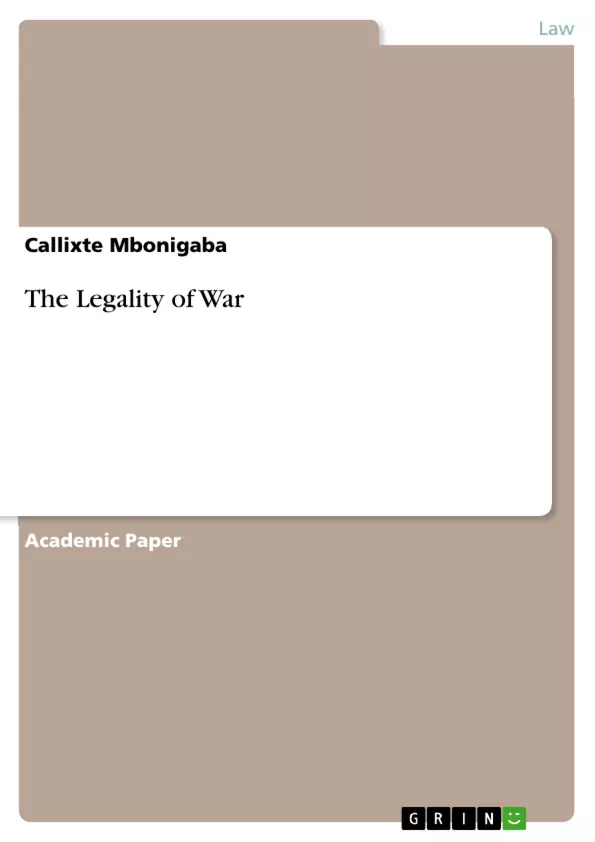This article examines the legality of war. Its methodology consists in the examination of various legal sources mainly from the nineteenth century to the present day. The conventional law relating to the rules governing wars emerged at the end of the nineteenth century with the Hague conventions on the laws and customs of war of 1899. By those conventions, states undertook, inter alia, to regulate the conduct of warfare. In addition, the recourse to wars was restricted and the principle of pacific settlement of international disputes was asserted. Yet, wars neither stopped nor decreased and the world later experienced the two world wars.
Nowadays, it is widely believed that aggression and proxy wars are prohibited. The mainstream literature argues that such prohibition started after the First World War, especially with the Kellogg- Briand Pact. However, there is little discussion on the evolution of such prohibition. This work solves that issue. In addition, while since immemorial times many states have been engaged in civil wars, the legality of those wars has received little attention from the literature. This article fills such gap. It asserts that international armed conflicts are prohibited and that they are allowed in some circumstances. With regard to the civil wars, they are unlawful under domestic law and seem lawful under international law.
Inhaltsverzeichnis (Table of Contents)
- Introduction
- International armed conflicts
- Before the nineteenth century
- From 1900 to the Second World War
Zielsetzung und Themenschwerpunkte (Objectives and Key Themes)
This article aims to examine the legality of war, both international and civil, by analyzing legal sources from the nineteenth century to the present day.
- The evolution of the prohibition of aggression and proxy wars
- The legality of civil wars under domestic and international law
- The restrictions on the use of force in international relations
- The role of international law in regulating the conduct of warfare
- The historical development of the rules governing war
Zusammenfassung der Kapitel (Chapter Summaries)
- Introduction
- International armed conflicts
- Before the nineteenth century
- From 1900 to the Second World War
The article opens with the Russian intervention in Ukraine in 2022 as a case study. It outlines the purpose of the article, which is to examine the rules of international law governing the legality of war, and how it differs from discussions about the legality of specific actions in the case of the Ukraine conflict. The article clarifies its focus on both international armed conflicts and non-international armed conflicts (civil wars), as well as proxy wars.
Prior to the nineteenth century, states were generally free to wage war and intervene in the internal affairs of other states. Examples such as France's intervention in Belgium's war of independence against the Netherlands are cited.
The article highlights the emergence of restrictions on the use of force in the late nineteenth century. The Hague Conventions of 1899 and 1907, as well as the Paris Declaration of 1856, are discussed as examples of international agreements aimed at promoting peaceful resolution of disputes and neutrality in civil conflicts. The Alabama case (1872) is cited as an example of a case where a state was held responsible for providing support to rebels during a civil war.
Schlüsselwörter (Keywords)
The core concepts and keywords of this article include international law, the legality of war, aggression, proxy wars, civil wars, international armed conflicts, non-international armed conflicts, peaceful resolution of disputes, Hague Conventions, Paris Declaration, the Alabama case, and the evolution of rules governing war.
- Quote paper
- Callixte Mbonigaba (Author), 2022, The Legality of War, Munich, GRIN Verlag, https://www.grin.com/document/1223167



